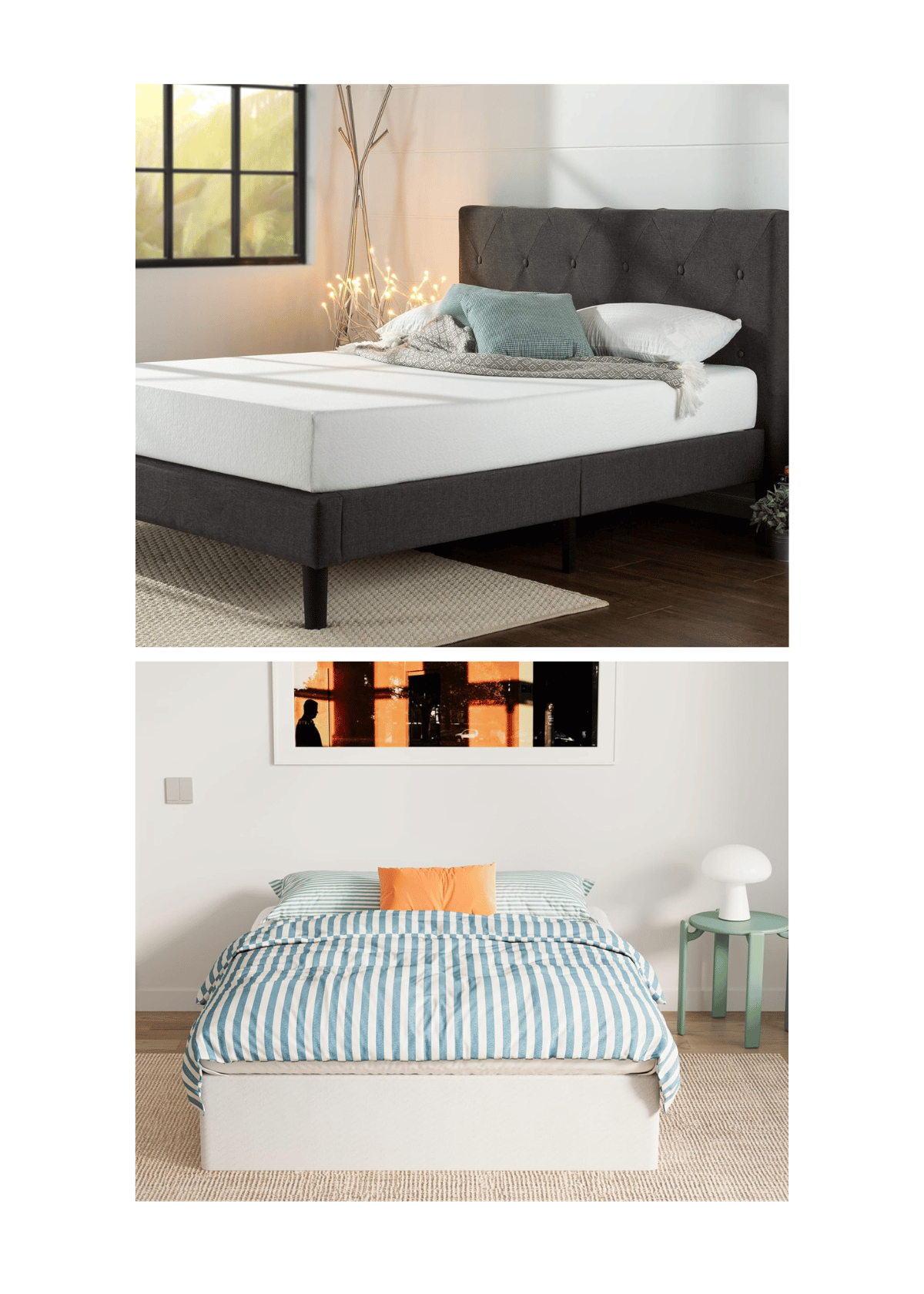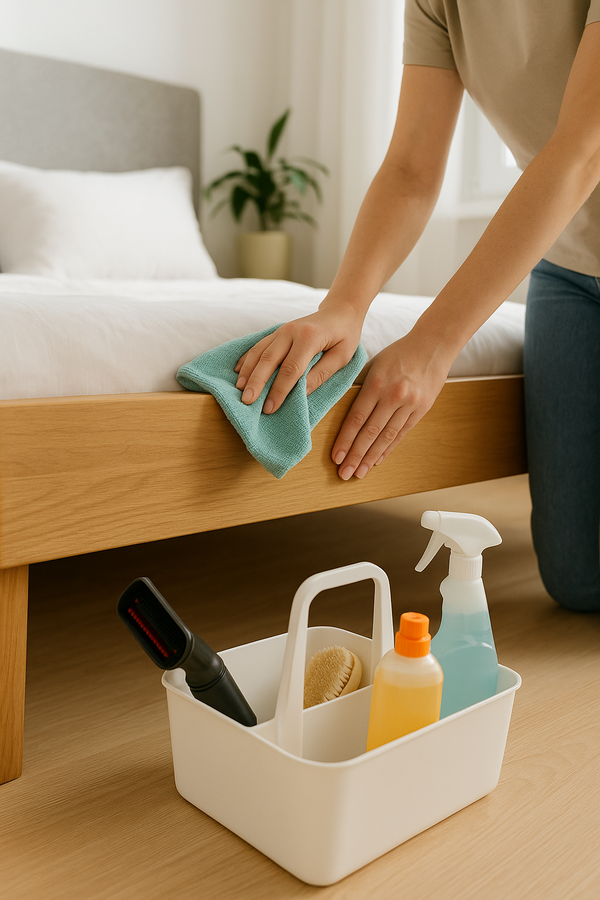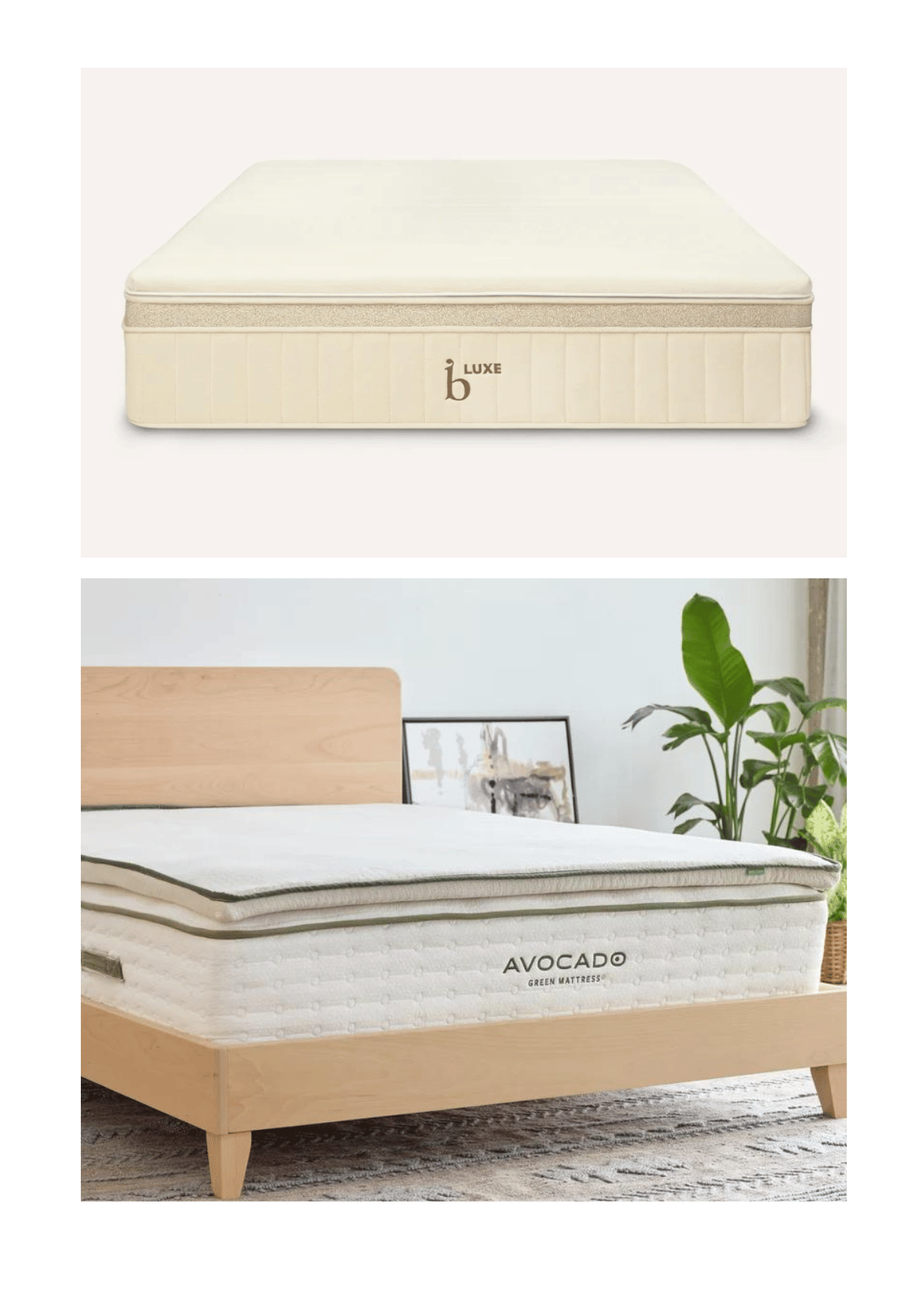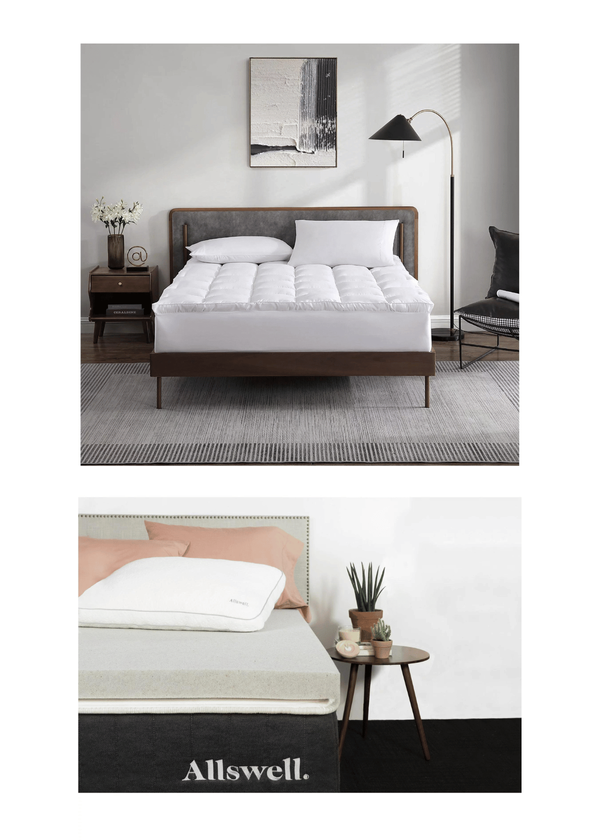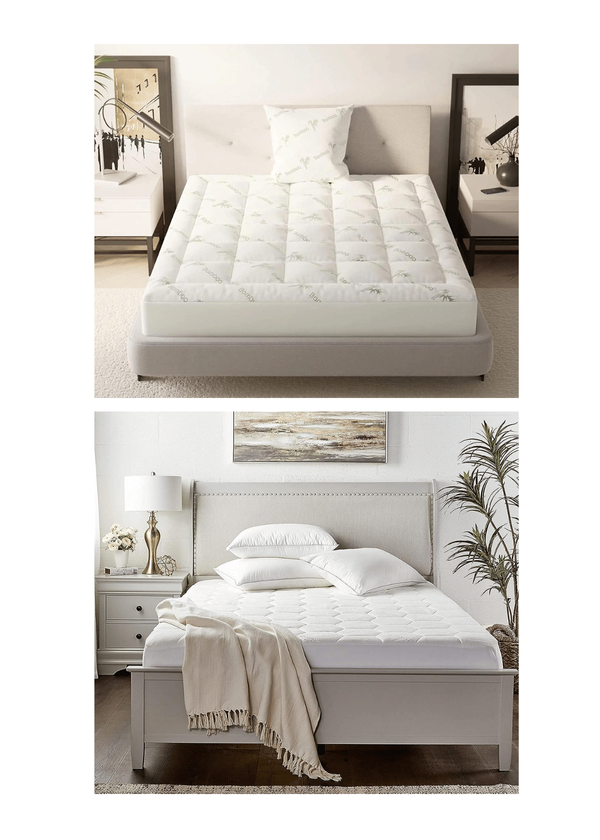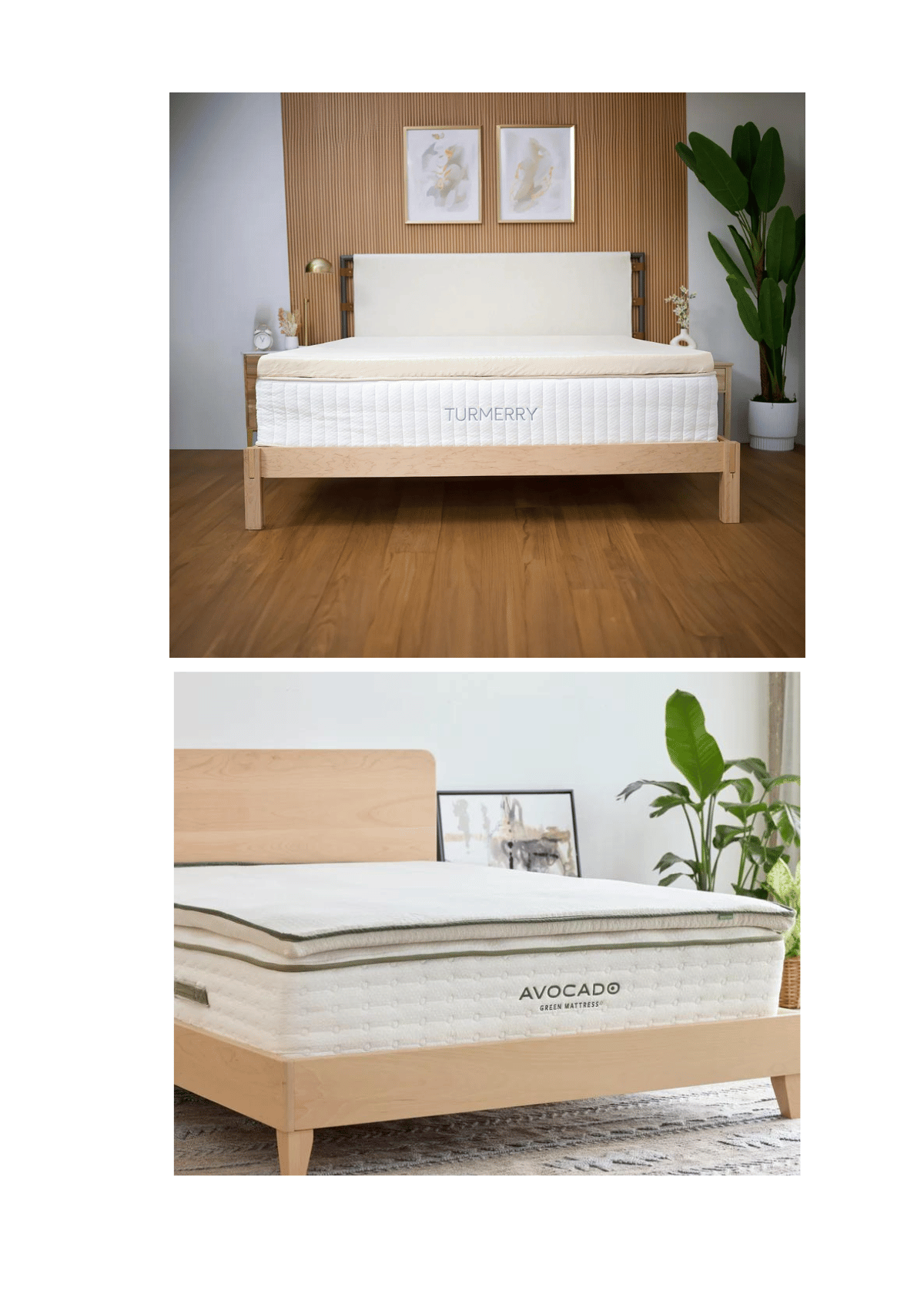(Last Updated: 11/02/2025)
A comfortable night’s sleep depends on more than just soft sheets or a cozy blanket—it starts with understanding what truly makes a high-quality mattress.
Over the years, the internet has filled with common mattress myths that confuse shoppers and lead to poor buying decisions.
From firmness to mattress warranties, misinformation can leave you second-guessing your comfort and overall well-being.
Below, we separate fact from fiction by addressing nine more myths—covering everything from thicker mattress misconceptions to coil counts, natural latex, and even the truth about those “Do Not Remove” law tags.
Myth #1: A Firm Mattress Is Better Than A Soft Mattress
Mattress Myths Debunked:
It's widely believed that the firmer the mattress, the better it is for your back and overall sleep. This idea has led countless sleepers to opt for the most rigid and firm mattresses they can find, often overlooking personal comfort.
The Misconception that Firmer Mattresses are Best
There is no one-size-fits-all when it comes to mattress firmness. The optimal firmness and best mattress hinge on your sleeping position, body type, and preference.
While a firm ,comfortable, and supportive mattress can support some people, others may find it uncomfortable. A hard mattress isn’t always better—restful sleep depends on support and comfort. Different mattresses work best depending on your body type and sleep preferences.
So, whether they prefer soft or medium-firm mattresses to alleviate pressure point pain, the key is to find a balance between comfort and proper support that suits your needs.
Soft mattresses conform closely to the body for a plush feel, while medium-firm options offer sturdier support and better spinal alignment.

Myth #2: You Must Replace the Mattress Every 8 Years
Myth:
One of the most commonly heard mattress rules is the "8-year rule", which asserts that you must replace your mattress every eight years.
The Mattress Lifespan's Misconception
While it's true that a mattress won't last forever, the exact lifespan of a mattress can vary greatly depending on its material, quality, and how well it's been maintained.
An old mattress may last beyond 8 years if it’s made with high quality materials and properly maintained. Age isn’t the only deciding factor.
Myth #3: One Size Fits All in the Mattress World
Myths debunked:
It’s a common misconception that one mattress suits everyone. All our mattresses are designed to match diverse sleep preferences and body types for optimal comfort. Many people assume that a universally 'perfect' mattress exists that will ensure a good night's sleep for every sleeper.
One Size Fits All Misconception:
Everyone has unique sleeping needs, preferences, and body types. Some might prefer the conforming feel of memory foam, while others might opt for the buoyancy of an innerspring mattress.
When choosing a mattress from a mattress retailer, it's important to consider personal comfort and support needs.
Mattress Monthly Myths
Debunking Pressure Relief Claims
Many believe that a new mattress will completely prevent tossing and turning. While quality mattresses can significantly reduce movement by providing targeted support and pressure point relief, they cannot eliminate all nighttime movements.
Quality mattresses aid in better sleep by:
- Reducing tension points
- Offering better spinal alignment
They don’t stop all movements, as these can be caused by various factors like:
- Stress
- Sleep disorders
- Poor sleeping habits
Therefore, while investing in a good mattress is crucial, managing other sleep hygiene aspects is also essential.
The Truth About Mattress Lifespan
Contrary to popular belief, mattresses today do not need to be replaced monthly. High-quality mattresses are designed to last several years, typically between 7-10 years.
Factors influencing mattress lifespan:
- Material quality
- Frequency of use
- Maintenance and care
Signs it’s time to replace your mattress:
- Sagging or lumps
- Increased allergies
- Persistent back pain
Myth # 4: Thicker Mattresses Are Always Better
Myth: A tall, plush mattress must be more supportive and luxurious.
Fact:
The truth is, thickness alone doesn’t determine comfort or durability. A thicker mattress made of low-density foam may lose shape faster than a medium-profile mattress crafted with high-density materials.
What really matters are the comfort layers and internal construction. For heavier sleepers, a taller mattress can provide extra support, but for others, it may create alignment issues.
Focus on the quality of layers rather than height—brands known for long-lasting designs, like those in best hybrid mattresses for couples, balance pressure points and contouring without excessive height.
The right mattress should support your entire body evenly, maintaining proper spinal alignment and eliminating unnecessary pressure points.
Myth # 5: Mattress Warranties Cover Everything
Myth: If a mattress comes with a 10- or 25-year warranty, every issue will be repaired or replaced.
Fact:
A mattress warranty only covers factory defects—never general wear, stains, or comfort loss. Damage caused by bodily fluids, spills, or neglect usually voids the warranty, which is why a protector is essential.
Retailers also require the original law tag and proof of purchase for warranty claims. Remember, comfort changes over time aren’t “defects.” Most brands treat impressions under 1.5 inches as normal.
A comfort guarantee, offered by some companies, is different—it allows exchanges if the mattress feels too firm or soft during the trial period. So don’t confuse a warranty with a satisfaction policy.
When buying your new bed, read the fine print carefully and check guides like mattress toppers for pressure points relief to fine-tune comfort levels instead of relying solely on warranties.

Myth # 6: A High-Priced Mattress Ensures Better Sleep
Myth: Expensive means better quality.
Fact:
While some high-end models offer premium foams or advanced cooling, price isn’t a guarantee of better rest.
Many high-quality mattresses in the mid-range outperform luxury ones because of efficient design. Online brands and mattress factories often skip retailer mark-ups, providing similar quality at lower cost.
Always check for scientific evidence of materials’ benefits rather than price tags alone. Your comfort depends on personal preference, sleeping position, and body weight—not just cost.
While a good mattress with the right support can help alleviate some back pain issues, it's not a cure-all. Back problems can stem from many factors, such as poor posture, lack of exercise, muscle strain, or underlying medical conditions.
A common mattress myth is that all sleep discomfort stems from the mattress itself, not a structural defect in the body.
Myth # 7: You Must Flip Your Mattress Regularly
Myth: Flipping every few months prevents sagging and extends lifespan.
Fact:
Modern mattresses have one-sided structures, making flipping unnecessary. Instead, rotate your mattress head-to-foot every few months to distribute wear evenly.
Flipping can damage comfort layers and even void a warranty. If you want a long-lasting surface, choose models built with durable other materials like natural latex, which is naturally breathable and resilient. For additional guidance, see best latex mattresses for eco-friendly comfort —they show how modern designs deliver balance without constant flipping.
While this practice was beneficial for double-sided beds in the past, it's only applicable to traditional beds and some modern mattresses designed for one-sided use.
These mattresses have specific comfort and support layers on one side, which would be compromised by flipping. However, rotating your mattress (turning it 180 degrees) can help even wear and extend your mattress's life.
Always consult your mattress' care instructions, but remember that the best way to extend the life of a mattress is to use a good-quality mattress protector and treat it with care.
Myth # 8: All Memory Foam Sleeps Hot
Myth: Every memory foam mattress traps heat and causes night sweats.
Fact:
That may have been true for traditional memory foam, but advances in technology have transformed the category. New foams are infused with cooling gels or copper particles to improve airflow.
Hybrid mattresses, combining coils and foam, circulate air more effectively, reducing trapped warmth. If overheating worries you, explore models made with natural latex or bamboo fabrics—these are naturally breathable and maintain cooler surface temperatures. See cooling mattress toppers guide for solutions designed to keep hot sleepers comfortable year-round.
While it's true that quality materials and craftsmanship in most mattresses often come at a cost, a higher price sometimes guarantees better sleep or a longer mattress lifespan.
Some high-priced mattresses have non-essential features that significantly hike the price without a great night's sleep.
Myth # 9: Your Mattress Should Feel Perfect Immediately
Myth: If your new bed isn’t comfortable on the first night, it’s the wrong choice.
Fact:
Most sleepers need time to adapt. During the first two months, your body adjusts to the mattress, and minor body impressions form as foams settle. This break-in period is normal and helps the bed contour better.
Many brands even recommend waiting at least 30 nights before making exchanges. If discomfort persists after the trial, consider add-ons like memory foam toppers for side sleepers to personalize feel without replacing the entire mattress.

Unlocking Comfort: Pressure Point Relief and Even Surface Support
The misconception surrounding tension points relief is that gel-infused beds are the sole solution for hot sleepers.
In reality, hot sleepers can find maximum enjoyment and alleviate pressure point pain by exploring new sleep surfaces such as synthetic latex or natural latex mattresses. These options offer cooling benefits and ensure the entire surface compresses evenly.
Myth # 10: Mattress Lifespan Is Always 8 Years
Myth: The industry rule says replace every 8 years—period.
Fact:
The “8-year rule” is a general guideline, not a hard cutoff. A well-maintained high-quality mattress may last 10 years or more, while cheaper ones wear out sooner. Lifespan depends on body weight, materials, and usage.
If you notice sagging, loss of support, or aches, it’s time to replace—even if it’s younger than eight years. Extend life by using a protector, rotating regularly, and practicing regular vacuuming to remove dust and allergens.
While it's accurate to say that not all mattresses require a box spring, it's a misconception to categorize them as wholly redundant. For specific mattress varieties, particularly spring mattresses, a box spring can offer critical support and prolong the mattress's overall durability.
Myth # 11: Removing the Law Tag Is Illegal
Myth: Cutting off that white “Do Not Remove” tag could get you in trouble.
Fact:
Once the mattress is yours, you can remove it freely. The warning is meant for retailers, ensuring accurate labeling before sale. Still, keep the law tag if possible—it lists manufacturing details often needed for warranty claims. Taking a photo of it before disposal is another easy safeguard.
Myth # 12: More Coils Mean More Support
Myth: The higher the coil count, the more supportive the bed.
Fact:
Coil count is only one piece of the puzzle. What matters more are the coil type, gauge, and overall construction. Modern hybrid mattresses use pocketed coils that move independently, reducing motion transfer and supporting different zones of the body.
Old Bonnell coils, by contrast, are interconnected and may cause motion ripple. So, more coils don’t always mean better support—quality design and comfort layers determine long-term satisfaction.
Learn more in best hybrid mattresses for couples, where balanced coil systems and plush foam layers combine for ideal comfort and proper spinal alignment.
Bonus Myths
Cooling Doesn’t Always Mean Better
Many believe that mattresses with cooling gel always sleep cooler, but performance can vary depending on materials and room conditions.
More Coils, More Confusion
While some think more coils equal better support, that’s not necessarily true. What matters is the right balance of comfort and durability.
Price Doesn’t Guarantee Quality
A hefty price tag doesn’t mean it’s the best choice. Instead, read reviews, look at return policies, and consider your specific needs.
What’s Truly the Perfect Mattress?
There’s no perfect bed for everyone. Comfort and support vary depending on individual needs, so always aim to make an informed decision.
Understanding Comfort in the Mattress Industry
In recent years, the mattress industry has evolved with innovative designs and new materials. Yet, common myths still confuse buyers. A comfortable mattress isn’t about price or marketing; it’s about how well it suits your sleeping preferences and provides balanced support. Every sleeper has different needs, so the right choice depends on factors like firmness levels, materials, and body type. A poor match often leads to a sleepless night and potential health concerns such as back or neck pain.
Finding the Right Choice for Every Sleeper
The comfort of a mattress depends on how it aligns your spine and distributes your body weight evenly.
Many mattresses are now made with gel-infused memory foam that promotes cooling and reduces body impressions. These modern materials help maintain shape and prevent sagging that once plagued older beds. To extend mattress life, follow the general rule of rotating it regularly and keeping it clean.
Key considerations for long-lasting comfort:
- Choose a mattress protector to prevent stains and control dust mites.
- Look for one-sided designs that reduce flipping needs.
- Expect minor softening during the first two months—this is normal settling.
- Avoid beds that promise “one size fits all”; comfort always varies.
Navigating Options and Firmness Levels
The best mattress for you depends on your sleeping preferences and body composition. Side sleepers often prefer softer beds that relieve shoulder pressure, while back sleepers may favor medium to firm surfaces for better alignment.
You’ll find different types and different options—from latex and hybrids to gel-infused memory foam—each with its own benefits.
When comparing firmness levels:
- Softer mattresses suit lightweight sleepers and side positions.
- Medium firmness offers a balance of contour and support.
- Firmer options are ideal for heavier sleepers or stomach positions.
- Remember, what feels perfect to one person may not to another.
Extending Mattress Life and Ensuring Quality Sleep
Even the best mattresses have a shorter lifespan without proper care. Use a mattress protector, vacuum occasionally, and let your mattress air out to prevent off-gassing odors.
During online shopping, check customer reviews and certifications for transparency. Ultimately, a comfortable mattress enhances recovery, reduces fatigue, and supports your well-being—making it the smartest investment for lasting comfort and healthier sleep.
Conclusion: Your Best Choice Comes from Accurate Information
Separating fact from fiction in the mattress world helps you make an informed decision—and ultimately, enjoy better sleep and improved overall well-being.
Whether you prefer memory foam, natural latex, or a hybrid mattress, the best option is one that fits your sleeping position, body weight, and comfort preferences.
Don’t rely on myths about warranties, thickness, or price—focus on construction, materials, and how the bed supports your entire body.
By choosing knowledge over marketing hype, you’ll find the right mattress for your needs—and finally wake up refreshed, supported, and free from sleepless nights.
Frequently Asked Questions
Is a mattress still good after 20 years?
While some high-quality mattresses can last beyond 10 years, very few remain supportive after 20. Most experts recommend replacing a bed every 7–10 years to maintain proper spinal alignment and hygiene. Over time, body weight and wear cause sagging and dust buildup that affect overall well-being. Learn how to pick a long-lasting model in best hybrid mattresses for couples (My Radiant Sleep).
Is it better to have a harder or softer new mattress?
It depends on your sleeping position and comfort preference. Side sleepers usually prefer softer mattresses to relieve pressure points, while back or stomach sleepers need a firmer surface for proper spinal alignment. The goal is balanced support for your entire body, not extreme firmness or softness. Explore examples in best mattresses for every sleep position (My Radiant Sleep).
Why is my mattress sinking after 2 years?
Early sagging can result from low-density foam, excess body weight, or sleeping in the same spot nightly. Poor-quality materials often compress faster, leading to discomfort. Rotate your mattress every few months, use a protector, and check mattress toppers for pressure relief (My Radiant Sleep) to extend its lifespan.


